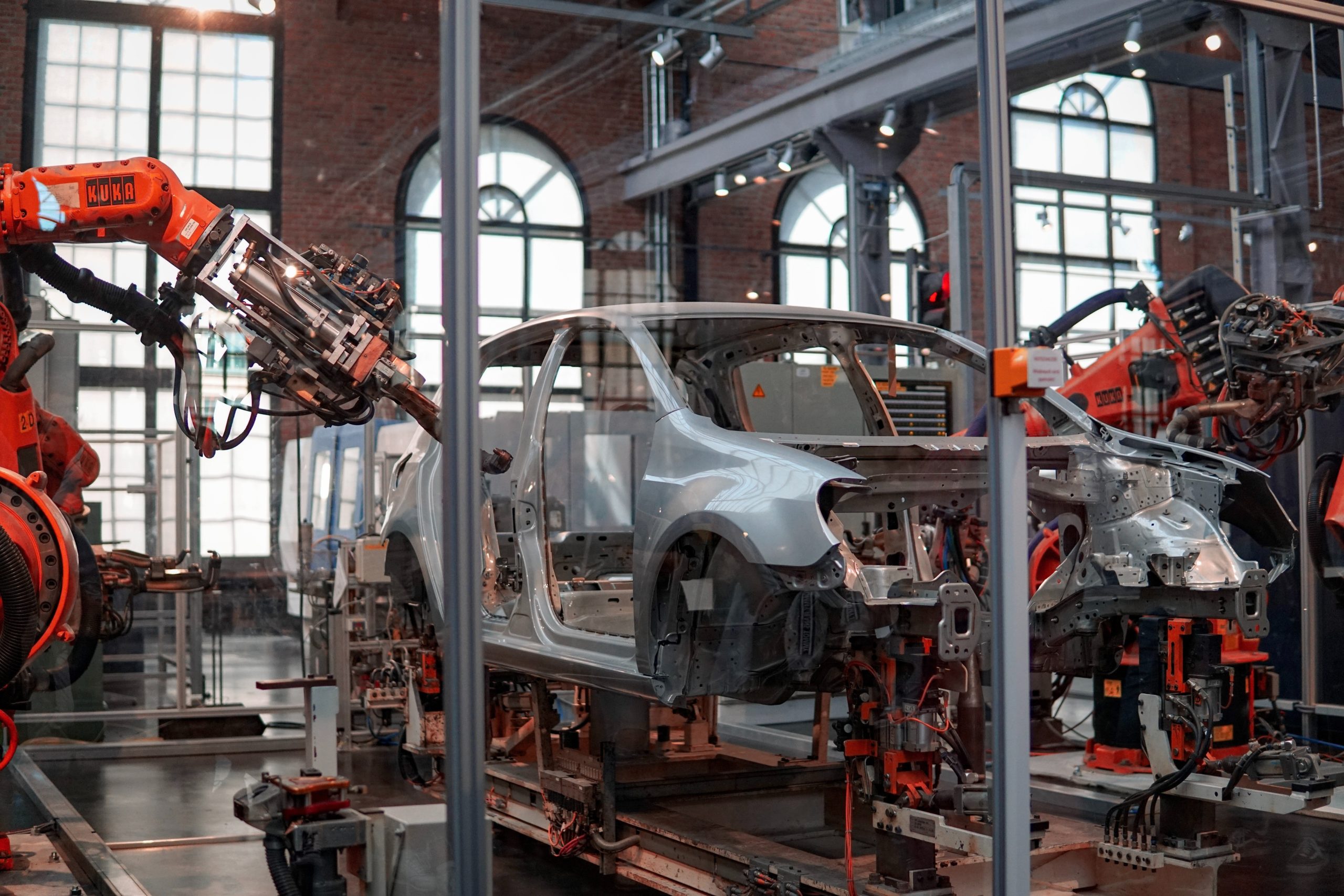On April 26th we held a CIMR Debate to discuss the state of the Industry 4.0 in the UK and compare it with Germany, which is regarded as a pioneer country in this field.
The debate was chaired by Jo Magnani (International Telecommunications Service Provider) with expert practitioners and academics in the field:
- Rosa Wilkinson, Director of Policy, High-Value Manufacturing Catapult
- Tomasz Mroczkowski, Professor in the International Business Department, Kogod School of Business, American University Washington DC
- Jeremy Galpin, Social Value Consultancy Lead, Costain Group PLC
- Dr Marios Samdanis, Senior Lecturer in Strategy Entrepreneurship and International Management, Brunel, University London
The full recording of the workshop is available here.
Jo Magnani – Inspiring the debate from her dissertation on Industry 4.0
The chair of this debate, Jo Magnani introduced the topic which was inspired from her dissertation (“Why is the UK lagging behind Germany in Smart Manufacturing and what can be done to improve the situation?”) comparing UK’s performance to Germany by using two respective industry giants in manufacturing as case study, particularly Rolls Royce Holdings for the UK and the German company Bosch. Based on various industrial and management consultancy criteria, including the PwC maturity model and academic papers as well as the registration of industrial IoT and artificial intelligence patents, it was found that the UK lags behind Germany in terms of adhering to industry 4.0 standards and procedures.
Jo opened the session by asking the speakers their opinion in this regard based on their experience and research in the field.
Rosa Wilkinson – UK’s Challenges in Embracing 4IR Technologies
Rosa Wilkinson began the session by discussing the potential of fourth industrial revolution technologies, such as digitalization, AI, robotics, and additive manufacturing, in transforming business performance.
Contrary to common perception, she highlighted that the UK is ranked first in Europe and third globally for the development and adoption of advanced digital technologies, according to the Digital Future Index. However, when looking at the distribution of advanced digital technology companies in specific sectors, the same research highlights that the UK is at risk of falling behind. The main barriers identified by firms on technology adoption are cost and finance, lack of awareness about the right technologies to adopt, and skills shortages. Additionally, companies often face limitations in terms of time and mental bandwidth to prioritize technological adoption.
Overall, these challenges could impact UK competitiveness in key markets, hinder next-generation product development and limit progress on issues like climate change. She stressed the need for support from organizations like the High Value Manufacturing Catapult to help companies overcome barriers and achieve success.
Tomasz Mroczkowski – UK Manufacturing & AI
The session continued with Tomasz Mroczkowski, who discussed the fate of British manufacturing, its comparison to Germany’s system, and the potential and current impact of AI.
Tomasz suggested that the UK could become a leader in Artificial Intelligence (AI) and industry 4.0 and shared some observations about the impact of AI so far, noting that private sector investment in AI research far exceeds public expenditure. He also mentioned some companies driving the AI sector, such as Google and Microsoft, and discussed concerns about industry capture by a few dominant companies.
Finally, Tomasz presented statistics indicating the current impact of AI, mentioning cost savings and revenue increases reported by survey respondents. He highlights that while investments in AI are increasing, the revolutionary impact is yet to be fully realized. He raised questions about who will monitor, coordinate, and supervise AI, noting that different approaches are being debated in China, the EU, and the US.
Jeremy Galpin – Implementing Social Value with Digital Twins
The session continued with Jeremy Galpin who discussed the role of data, technology, and the concept of social value in infrastructure projects by drawing on his recent study.
He emphasizes the integration of technology and data at a platform level to make informed decisions and proposes a digital framework based on a multi-capital model. Additionally, he advocates for the use of digital twins to enhance decision-making throughout the asset’s life cycle. These are digital versions of infrastructure assets that allow for modeling, simulation, and performance evaluation. Jeremy also suggests embedding social value data into digital twin development to enhance decision-making throughout the life cycle of infrastructure assets.
Jeremy concluded by acknowledging the progress being made in the policy environment regarding infrastructure projects, although he acknowledged the need to catch up with international examples, particularly in the field of digital twins.
Marios Samdanis – Final thoughts on Industry 4.0 concept and public expenditure
The discussion continued on the interpretation and impact of Industry 4.0 as well as on actions that could be taken by the government on promoting advances in the field.
Dr Marios Samdanis raised questions about the concept of Industry 4.0 and its true impact on society and industries. He discussed the different interpretations and approaches to Industry 4.0 across countries, emphasizing the importance of critically examining this discourse. He also brought up the disparity between private sector investment in artificial intelligence research and public sector spending. He poses questions about whether this is a problem and what governments should do to address it.
Tomasz acknowledges the disruptive nature of AI and Industry 4.0 and emphasized the need for society to adjust. He also mentioned the impact of AI on education and the importance of quick adaptation. The discussion concluded with considerations of incentive programs and the role of free markets in driving technological advancements.
We would like to thank again our great panel of speakers and chair for their valuable contribution to this event and to our attendees for being so engaged during the session.
Don’t miss out on our upcoming CIMR Debates sessions!

